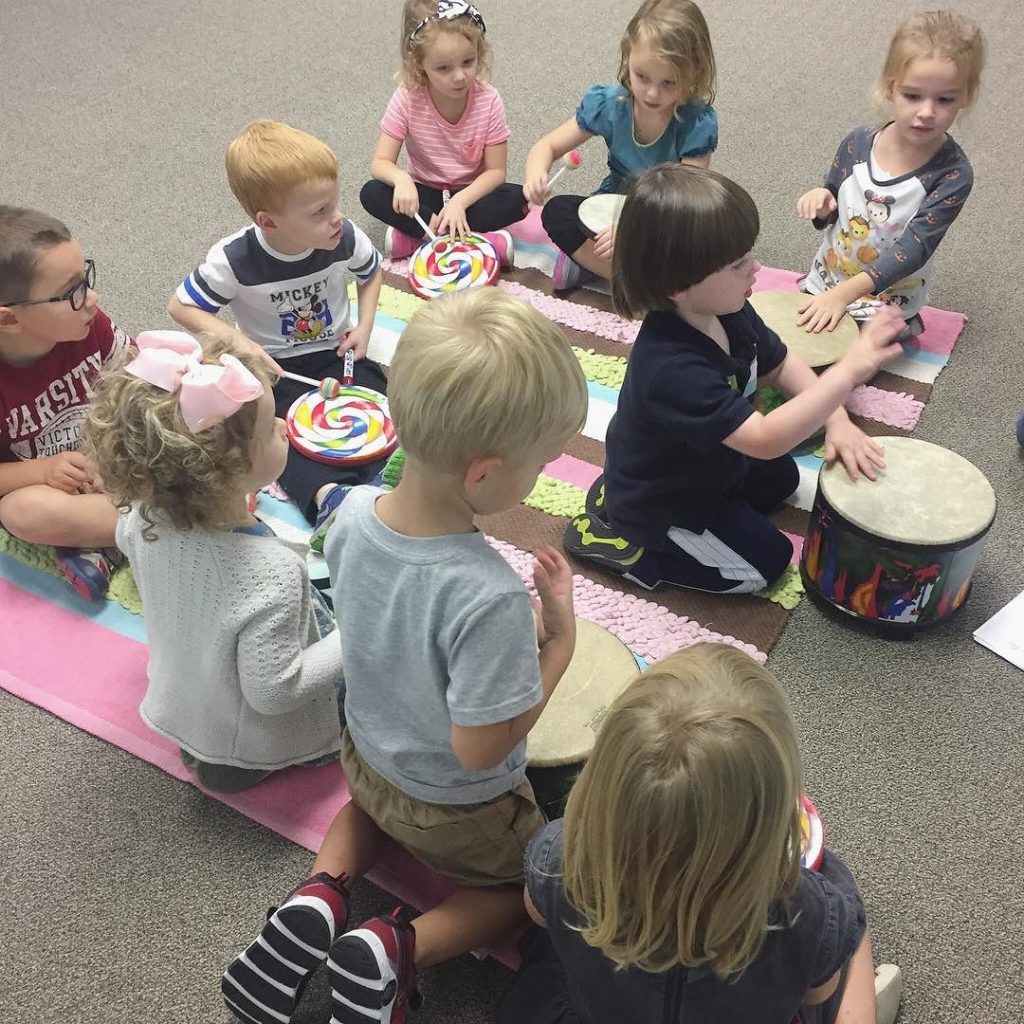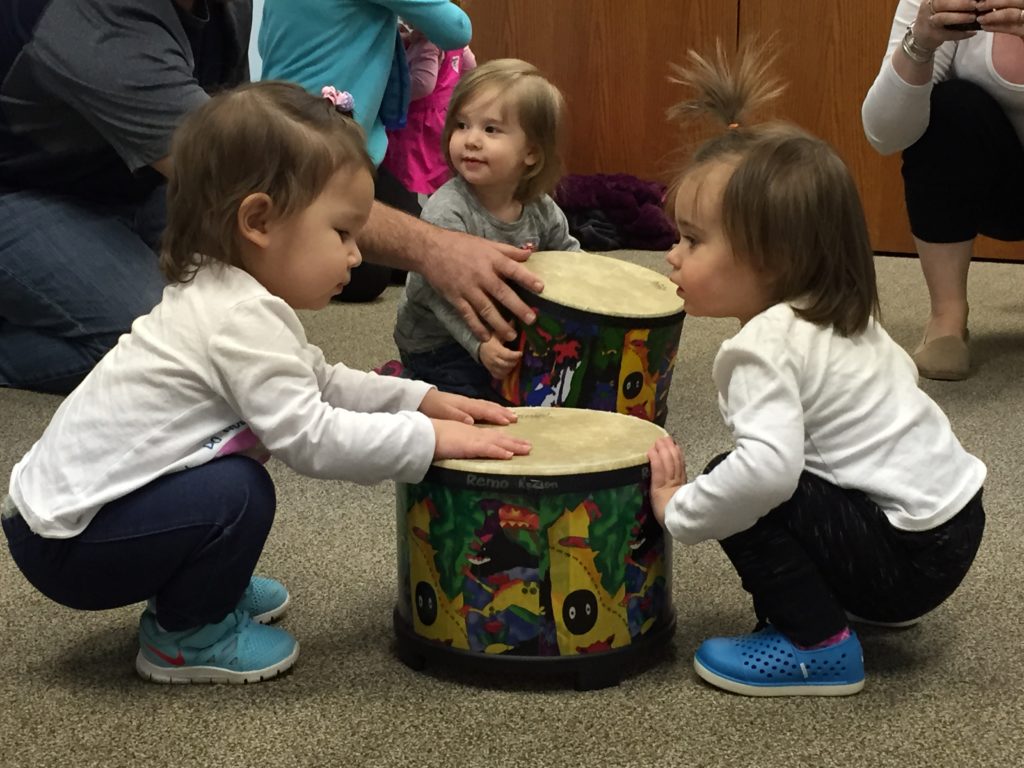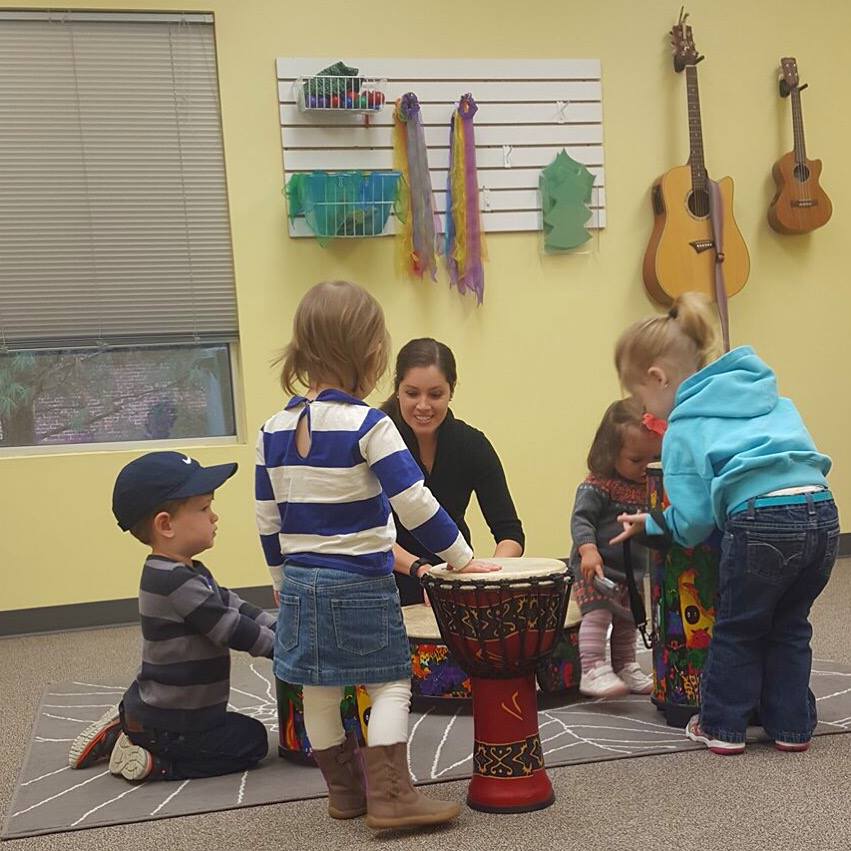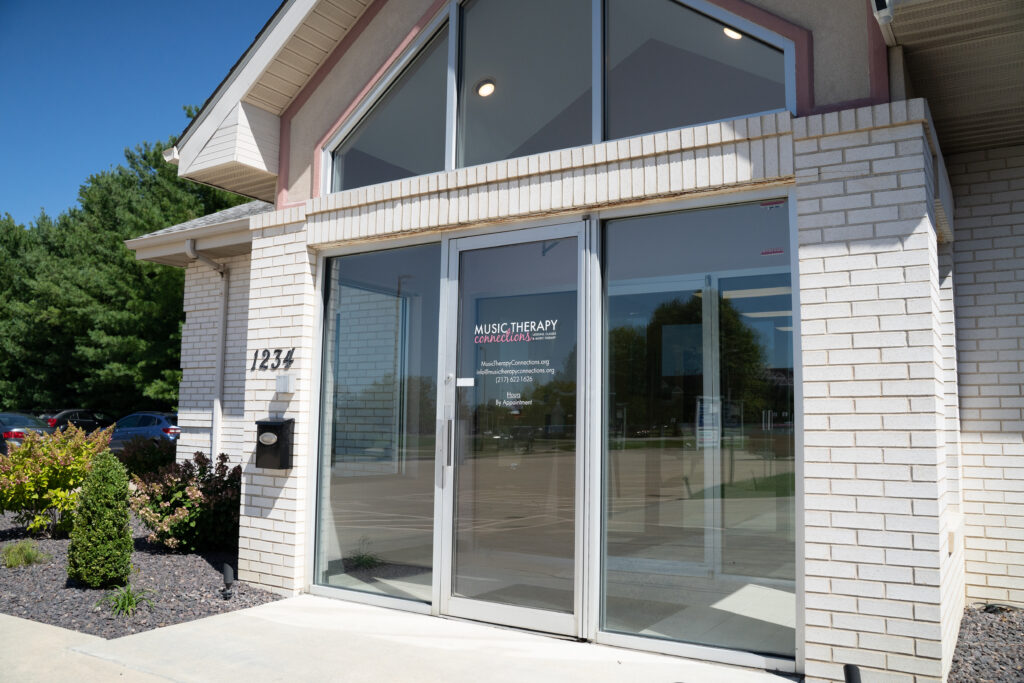
One of the most surprising things I’ve learned about myself coming out of internship is that I love drumming interventions! With a little bit of practice playing a consistent steady beat and embracing improvisation, drumming with clients of all ages and who have a variety of needs can be extremely effective and versatile when it comes to addressing goals related to:
- Emotional wellness
- Physical motor skills
- Expressive communication
- Cognitive skills
- Academic skills
I’m excited to share how I’ve used drumming in the past to meet the needs listed above, and to encourage those who may not feel comfortable with rhythm or drums that rhythmic competence is not the ultimate goal. Rather, the goal is to create opportunities for your client to maximally participate and engage through the structure of a steady beat and through tactile and auditory feedback.
Drumming for Emotional Wellness
Improvising a drum solo or using call and response activity can be effective in validating a client’s emotional state, or when used as a creative outlet, it can assist the client in coping with certain emotions.

Physical Motor Skills
A steady beat primes muscles to coordinate and move at consistent times and for greater durations. Drumming (and placement of the drum) can encourage muscle movement and coordination for clients with physical needs.
Expressive Communication
Improvising a drum solo or call and response activity can be a great way for nonverbal communicators to express a dialogue with a therapist or convey a musical message.
Cognitive Skills
Drumming allows the incorporation of memory and sequencing skills through call and response activities.
Academic Skills
Drums can come in different shapes and colors, which can assist with learning pre-academic concepts. Also, drumming and counting can go hand in hand, which is another important skill for early childhood learners.

These are some of my go-to drumming applications that can be adapted for individuals of all ages and needs. Regardless of whether you’re rhythmically challenged or not, I hope that you find ways to add drums into your sessions!
If you want to share how you’ve used drumming in your sessions, leave a comment below, and if you want to learn more about music therapy, check out MTC’s services!


